In June 2016 Tawasol concluded its second to last voting session for the Arabic Symbol Dictionary Project. 24 therapists voted on 60 symbols from 3 organisations; AWSAJ Academy, Hamad Medical Corporation Speech Therapy department and The Hamad Child Development Centre. Although traditionally 40-60 voters participate from a wide range of organisations and
AAC contexts, it was difficult to facilitate similar numbers to previous occasions because the school year end was coming to a close for 3 months of summer vacation.
Unfortunately, with a technical hitch, all voting took place on paper rather than our usual online voting. This, we believe skewed our data as on the online symbol manager you are not able to submit a comment unless you enter numeric ratings for the criteria. Although the significance of completing numeric ratings on paper was explained to voters, 101 symbols had comments but no numeric data. The team discussed this and decided that the best way to proceed would be to review the comments and if there was an element of negativity in the comment, it would be given a score of 2 out of 5 and if it was a positive comment it would be given a 4 out of 5. The results for the 4 sets of criteria over 4 batches of symbols are as below:
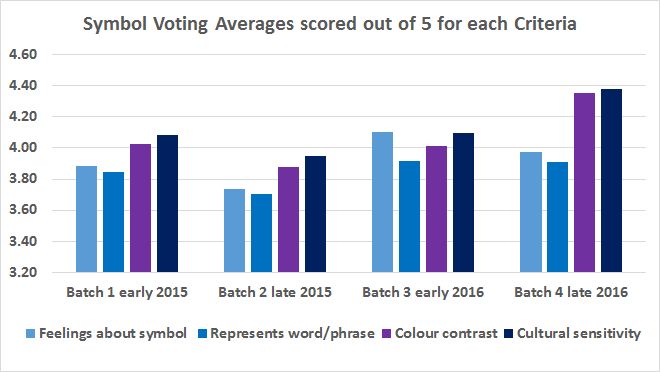
We believe it is because of this change in voting settings that the ratings related to ‘feelings about the symbol’ and ‘represents word/phrase’ were not as favourable as in previous voting sessions. We also believe that the recent concepts (for which we are developing symbols), are becoming more and more abstract and more difficult to depict. A commonly repeated statement throughout the voting sessions was “I don’t think of this word when I see this symbol but it’s a hard concept to convey and I can’t come up with a better way to visually depict it.” It was pleasing to see the colour/contrast and cultural sensitivity ratings and comments improve.
However, there were advantages of not using the technology in that we received more in depth comments and participants appeared to be willing to be more critical which was immensely helpful.
Summary of the comments provided from the voting sessions.
Zoom In!
For a number of symbols the voters requested that we zoom in on the essential parts of the symbol to emphasise the facial expressions, essential details and focus the user on the intended meaning. They communicated that a whole body depiction wasn’t needed in symbols like thirsty and quiet and preferred that just the head and neck were showing or in the case of “tummy” that only the chest down be shown.
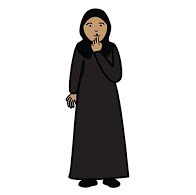
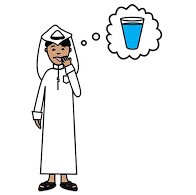
Oops! Didn’t think of that!
Voters in batch 4 really helped us to focus on the details in symbols, as this can make a big a difference to first impressions and comprehension. For example for the concept “easy” the thinking bubble actually had an equation that wasn’t necessarily “easy”. They all said stick to 1+1=2. Also, in the symbol for nanny, the character is wearing an apron which they said can be confused with a maid. In Qatar, a nanny looks after the children while the maid carries out house duties.


Swap it!
It was interesting to hear voters say “this symbol would be perfect for your other word just change x”. For example they suggested we use the symbol for “contribute” for “teacher” but just add an arrow to the teacher. This was also the case for “something” where voters suggested this could be the symbol for “choose” just with the finger making direct contact with one of the objects.

contribute symbol above teacher and something above the choose symbol going from top left.
That’s not the word…
Voters picked out a few words in Arabic which they believed were not accurate. For example “canteen” transliterated in Arabic to “cafeteria” was not acceptable and suggested the word “مقصف”. This was also the case for “dictionary” in Arabic where it was suggested that the term we had used “قاموس” was specifically a dictionary for translated terms where as a dictionary with words and their meanings should be referred to as a “معجم”.
Compare the pair.
For some difficult concepts voters suggested that it would be easier to grasp the concept if there was a comparison within the same symbol. For example; fast and slow were a bit difficult to understand as standalone symbols but when put together into one symbol and fading the unintended concept, it became clearer. They also requested this for “organised” i.e. to have a “messy” office side by side with an “organised office otherwise the symbol could be interpreted as “office”.

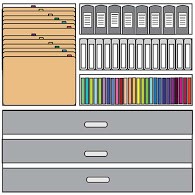
How rude!
Despite the rise in positive cultural suitability ratings, a few cultural issues are still being raised. The symbol for “come” using the index finger is seen as rude, belittling and disrespectful in the Arab culture. Although they all agreed it was very clear that it was “come” they didn’t think it was appropriate. Some voters also were unhappy with the boy uncovering his stomach for the “tummy” symbol and preferred that his stomach be covered and to indicate stomach with an arrow.

Put it into context.
Voters reminded us of the importance of including context in symbols. For example the symbol for “active”, they suggested that they need to be in a park and for “teacher” although she did look like a teacher they thought it was essential to put her in a classroom.


Is this symbol really needed?
Some voters questioned how essential some of the symbols were and whether they were really needed e.g. manufacture and emotional faces.

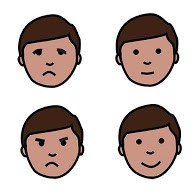
It was very insightful once again to hear the perspectives of those working with AAC users. All their comments have been passed onto the graphic designer and changes will be made to the symbols discussed.
During our voting session at AWSAJ Academy, we provided participants with resource packs that included a variety of communication scenarios made with our symbols. This included bathroom routines, prayer position sequences, fire drill execution charts, fill in the gaps worksheets, what I did on the weekend worksheets, The life of Prophet Muhammad (pbuh) symbol book with corresponding worksheets, basic requirements communication boards, refugee communication boards, I want charts and many more. You can download all the resources from the Tawasol symbols website.
We also gave every teacher and therapist evaluation forms to see whether the symbols were meeting their needs. In the coming weeks we will update you on the results of the symbol evaluations.
Report by Amatullah Kadous
